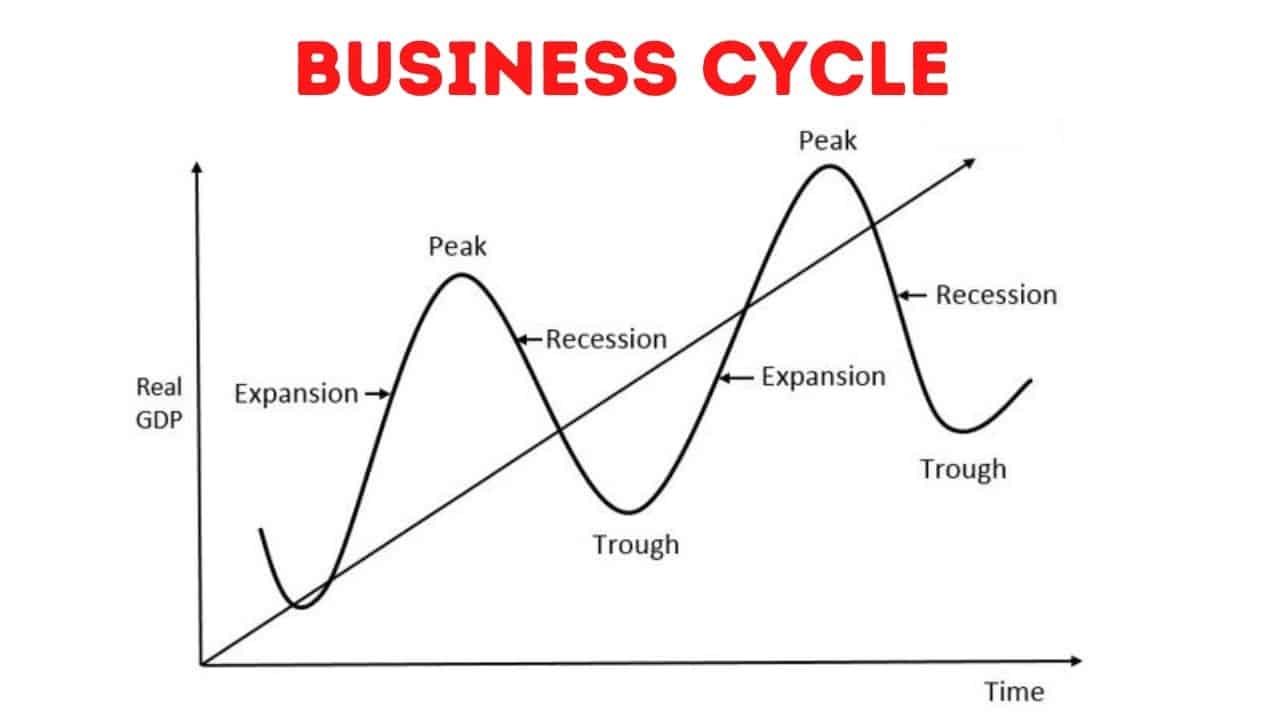Financial planning for a business is one of the critical aspects of running a business. The process is designed to predict the business’s financial future and to determine the best way to use the company’s financial resources.
The end product, which is a financial plan, serves as a roadmap that guides all your future financial endeavors.
Want to take your business to the next level? Then let’s get to know all about the financial planning process.
It’s your lucky day because this article is going to teach you all you need to know about financial planning for your business.
Let’s get started!
What is a Financial Plan?
A financial plan is a document containing your business’s current financial situation and the several methods you intend to take to achieve your financial goals.
To create a solid financial plan, you’ll need to analyze the main components of your business. In other words, the part of your business where the majority of the money goes. Hence, to discover this, ask yourself these questions.
- How much money are you taking in and paying out?
- What are your biggest costs, and where are they likely to increase spending the most in the near future?
- Where will you be able to cut costs?
- How is competition likely to affect your business?
Having the right answers to these questions will enable you to create a financial plan that captures your current financial situation and future expectations.
Now, to the main topic of the day.
What Is Financial Planning?
Financial planning is the process of determining how a business will achieve its goals and objectives. Generally, for every business to grow, it needs to have money to expand, hire more staff, and buy tools required for production. So, creating a financial plan for your business will help you make better financial decisions.
You can decide to create it independently or with the help of a certified financial planner.
However, to properly plan your business, you need to have a well-defined business vision, goals, and objectives. This is because, the Financial Plan describes each of the activities, resources, equipment, and materials that are needed to achieve these objectives, as well as the timeframes involved.
It involves the following activities:
- Analyzing the business environment
- Identifying any risks and issues with the budget set.
- Confirming the business vision and objectives
- Calculating the total cost of each type of resource
- Quantifying the number of resources (labor, equipment, materials)
- Summarizing the costs to create a budget
- Identifying the types of resources needed to achieve these objectives
Since financial planning is one of the major aspects of financial planning, it is important you critically think it through and analyze it before deciding to implement it.
Because a poorly crafted financial plan from a bad financial planning process can cost you your business.
Yes, I really mean it.
RELATED POST: Financial Risk Management: All you need to know (+practical examples)
Importance of Financial Planning
The importance of financial planning cannot be overemphasized. Just as you need a business plan to properly direct your actions towards the success of your business, you also need a financial plan that will guide you on the several financial investments you’d take over the course of your business.
So, below are some of the importance of financial planning for a business.
- Firstly, financial planning provides your business plan with enough details required to pull the business through. It shows that the business can be established financially and can equally be monitored till it starts bringing in profits.
- Secondly, it shows the commitment of a company to sound business practices. That is the ability to meet financial goals and spend wisely. This can encourage external investors and increase the potential for long-term success.
- Thirdly, it ensures there’s a balance between the inflow and outflow of money in a business.
- Next, It helps to sustain growth and expansion programs that move the business forward.
- Again, it ensures the company has enough funds to operate
- Finally, financial planning reduces uncertainties in a business which can hinder the company’s growth.
Regardless of all these important, some business owners still neglect the need for a financial plan. Some may even bypass the idea and believe they have it all figured out which isn’t entirely so.
The truth is, financial planning isn’t just for large companies. Even with your small startup, you can create a financial plan for it to enable you to remain on track toward the success of your business.
So, while you can’t guarantee that everything will play out as you’ve planned, having a financial plan for your business prepares you for what is ahead.
Objectives of Financial Planning
There are a lot of financial goals to set, hence the need for financial planning. Below are some of the objectives of financial planning.
#1. Determining Cash Flow
The main need for financial planning for your business is to know where your money is going. Having a record of all the finances that go into your business will enable you to know what you really need to spend and what expenses you need to cut down on.
One way to determine this if you don’t have a financial plan yet is to check through your credit card and checking account statements. Together, there would be traces of what you spent your money on before you realized that you need to do financial planning for your business.
To track your average spending per month, add up all your expenses in your statement and divide it by 12. This way you wouldn’t overestimate or underestimate what you spend monthly.
#2. Determining Capital Requirements
Determining your capital requirements depends on factors like the cost of current and fixed assets, promotional expenses, and long-range planning. Capital requirements have to be looked at with both aspects: Short- term and Long- term requirements.
#3. To ensure that financial resources are maximized in the best way possible to get maximum returns on investment.
#4. To determine the amount of capital required in the business. This includes decisions on the debt-equity ratio, both short-term and long-term.
#5. To create financial policies with regard to lending, borrowing, and cash control
RELATED POST: FINANCIAL RESOURCES: 7 Best Sources too look out for in 2023 (+ Detailed Guide)
Types of Financial Planning Process
The financial planning process for a business involves the steps taken to come up with a good and workable financial plan. Hence, below are the types of financial planning processes you can adopt.
- A short-term financial plan
- Medium-term financial plan
- Long-term financial plan
#1. Short-term financial planning
This type of financial planning process lasts for as long as a year. Here, you take into consideration your current financial status and the financial resources at your disposal that can help you meet your financial goal.
#2. Medium-term financial planning
In this type of financial planning process, you are planning for a longer period of time. Anything between two to five years. You take into consideration your current income status, your business sector If there’d be any switch to another sector, future income increment, and growth prospects.
#3. Long-term financial planning
Here, you are planning for a longer period of time, From 5 years and above. You take into consideration, the different types of investment opportunities that are open to you. To do this, you need consistent and systematic planning, savings, expenditure control, tax savings and carefully following the financial planning strategy.
Concept of Financial Planning For a Business
Generally, the concept of financial planning revolves around the following;
- Cash flow management
- Investment management
- Debt Management
- Tax Management
#1. Cash Flow Management
This involves managing the cash flow of your business. In other words, keeping an eye on the inflow and outflow of funds.
To properly do this, you need to estimate your present and future expenditure, an keep the expenses under control because that’s the fastest way to achieving your financial goals.
In addition, it involves creating a reserve of emergency funds for unforeseen circumstances. I call it, “your life support”.
#2. Investment Management
To achieve those financial goals, you’ve set, you need to invest in various investment instruments throughout your life.
Doing the right investment is the surest way to accumulate enough funds to spend on the very important aspects of your life.
#3. Debt Management
This involves managing all the cash you borrowed in time past. Although they say you don’t always pay off all your debts, the best thing is to keep it at a minimal level.
If your business can’t afford to sustain an expansion or a diversification into an entirely new product. Then there’s no need going to borrow money for an expansion in the first place.
Putting your debts in check helps you control the amount of money your business spends externally.
#4. Tax Management
Paying taxes is a major factor in your expenditure list. Hence, to maximize your real income, tax exemption and tax liability are of utmost importance.
Consult investment planners or tax consultants to recommend the best tax-saving instruments you can invest in, through various government and private investment schemes.
RELATED POST: What Is BUSINESS CYCLE?- Definition, Internal and External Causes
What is the Financial Planning Process?
Financial planning is the process of creating objectives, policies, procedures, programs, and budgets regarding the financial activities of a business. This ensures effective and adequate financial and investment policies.
However, to come up with a good financial plan, there are steps you must take that complete the financial planning process.
Below are the steps involved in the financial planning process.
#1. Set financial goals
The main reason you are coming up with a plan is that there is a goal that you need to meet. So, wonder why it’s the first step to financial planning.
Set realistic financial goals. Keep it achievable within the period of time you’ve set for it. Separate your needs from your wants.
Also, make it inspirational. What do you want your business to look like in the next five years? How many assets do you want to acquire in the next 10 years?
Your goals need to inspire you or you wouldn’t work towards achieving them.
#2. Gather your financial information
In this step, you need to gather all the current financial information about your business. This is because the financial planning process depends on the quality and clarity of the information you have at your disposal.
Here’s a guideline.
- Find out what your income and expenses are, assets and liabilities, as well as, risk attitude.
- Know where your money is. Know exactly what’s coming in, what’s going out, and how it is going out.
- After you have created a financial plan, then the next thing to do is to
- Find out if there are cash diversions anywhere and tackle them squarely.
#3. Analyze your business financial information
For this segment, you can decide to hire a financial adviser. It involves monitoring all the financial information you have gathered about your business. Ensure what is on paper is exactly what’s happening in your business.
Through analysis, you or your financial adviser will be able to determine what exactly your financial situation is, identify areas of strength and weakness, and narrow down your financial actions to what will truly benefit the business.
#4. Create a financial plan
Having followed the above steps till now, it’s time to create a financial plan. The plan is developed based on the final information you have from step 2 and 3.
Additionally, the financial goals you’ve set will be included, to help you work towards achieving it.
Your financial plan will include:
- Net worth statement (a balance sheet)
- Annual consolidated tax calculation
- Annual cash flow report (displaying surplus or deficit)
Now, you have a clearer picture of what you are looking to attain.
#5. Implement your financial plan
Once all the other steps are done, it’s time to implement what you have created. Usually, there’d be a recommended course of action to follow in line with the new financial planning process.
A typical course of action may include;
- Income and expenses adjustment
- A new investment strategy
- Or additional insurance.
Either way, you’d implement the results from your planning process, and come up with suitable plans for your business.
Personal Financial Planning Process
This process involves strategically planning your finances for your future. It involves monitoring your income, expenses, and debt.
This process is not just for those with a lot of money. It’s for everyone who has an income and expenditure. And at least 70% of Americans belong to this category.
Well-planned finance will go a long way in saving your future.
Here are the steps to take
#1. Define your financial goals
The first step in financial planning is oftentimes the hardest. To clearly define your financial goals, you need to start asking yourself questions like these. Where do you see yourself in five, or ten years?
This helps you to consider what you value in life and determine what kind of life you want to live in the future.
#2. Prioritize your goals
Now that you have an idea of your financial goals for your future, its important that you prioritize them above anything else.
Prioritize the important aspects of your life and save towards them. For example;
- Save for retirement
- Save for your children’s trust fund
- For a down payment on a home
- Save to go out of a debt
Remember the 50/30/20 rule? Where 50% of your income goes to regular bills and expenses, 30% goes to personal needs and 20% goes to saving? Yes, employing it at this stage is really advisable.
#3. Create a budget plan
Yes, after you’ve arranged your needs in order of importance, create a budget plan and stick to it for the rest of your life.
The budget will be based on all your income and expenditures. Here’s how to create one.
- Make a list of your income and expenditure over a 30-day period
- Group your expenditures into fixed and variable costs. Fixed means it’s the same amount, e.g rent while variable costs mean that it changes over time e.g groceries, night outs, etc.
- Analyze your variable expenses and identify areas you can cut back.
- Save that amount you’ve decided to cut back from your expenses
- Review your budget monthly for possible adjustments.
RELATED POST: Personal Finance: Basics, Importance, Types, Management ( + Free Softwares)
Top Financial Planning Apps
Below are some apps you can use to aid you in the financial planning process.
- Money lover
- Toshl
- mTrakr
- Moneycontrol
- Tax calculator
- Splitwise
- Digilocker
- Pocket Expense
- Money-Wise
- Finansisto
- Andromoney
Financial planning pdfs and research papers can be found online from financial researchers across the globe.
How Do I Write a Financial Plan For Small Business?
Examine your strategic planning. Financial planning should begin with
- The strategic plan of the organization.
- Construct financial projections.
- Organize financing.
- Prepare for contingencies.
- Monitor.
- Get help.
What Are the 4 Stages of Business Planning?
Collect information (internal and external) Create different plans, then choose the one with the highest probability of achieving company objectives. Execute the plan. Evaluate and revise as necessary.
What Are the Six Principles of Money Management?
One of the six fundamental principles of finance is that “money has a time value,” while another is that “risk equals reward,” yet another that “diversification can reduce risk,” yet another is that “financial markets are efficient in pricing securities,” yet another that “manager and stockholder objectives may differ,” and yet another that “reputation matters.”
What Is the Golden Rule of Finance?
First, a quick review: One should follow the adage of “living within one’s means” and prioritize keeping monetary gains. This may seem like a no-brainer, but it’s shocking how many individuals fail to follow it and pile up debt as a result. Take the use of credit cards as an illustration.
What Are the 3 Parts of Financial Planning?
Important aspects of a financial strategy
- Budgeting and saving objectives within the context of a financial plan.
- Investing in accordance with a financial strategy.
- Goals for estate planning within a financial strategy.
- The function of insurance inside a financial plan.
What Are Four Money Management Tools?
Money Management Tools
- Budgeting.
- Saving.
- Banking.
- Credit.
- Protect ID.
- Investing.
- Job Search.
- Insurance.
What Are the 4 Factors That Influence Financial Planning?
Influencing factors in Financial Planning
- Social Welfare.
- Financial Inclusion.
- Financial Literacy.
- Mastering Personal Finance.
- Factors that Influence Financial Planning.
In Summary
Financial planning for a business can be really hard because of some variables that affect the business. For instance, consumer behavior toward a new product or a change in the price of an old product is hard to predict, and this affects the finances of a business.
Regardless, it is still something that is worth trying as it’s better to plan and have a model than to leave your business finances in the hands of your business. Literally.
As you read this article, I hope it helps you make a good financial planning decision.
Good luck!
PS: Don’t have a business plan yet? Or you’re still a bit confused about the idea of a business plan? Don’t worry, we got you! Click on the button below to have access to our list of workable business plans that has helped a lot of business owners in over 10 countries of the world.
Related Articles
Project Planning: A Guide To Project Planning Techniques(Opens in a new browser tab)
PERSONAL FINANCIAL MANAGEMENT: Guide to Personal Financial Management(Opens in a new browser tab)
STRATEGIC MARKETING PLAN: Steps to Strategic Marketing Plan(Opens in a new browser tab)
PERSONAL DEVELOPMENT GOALS: Definition, Examples and How to Set it Up(Opens in a new browser tab)






